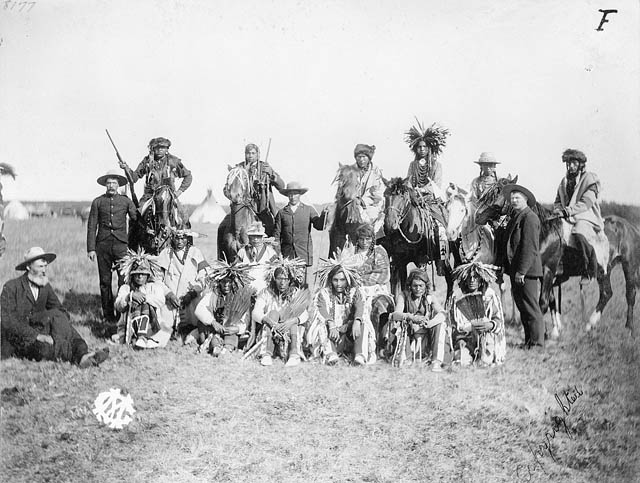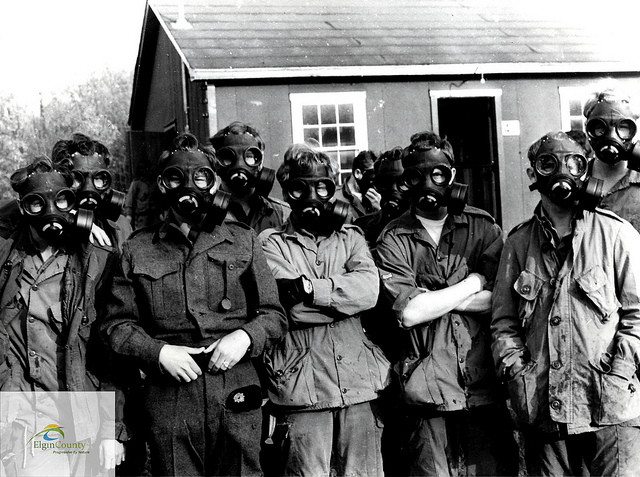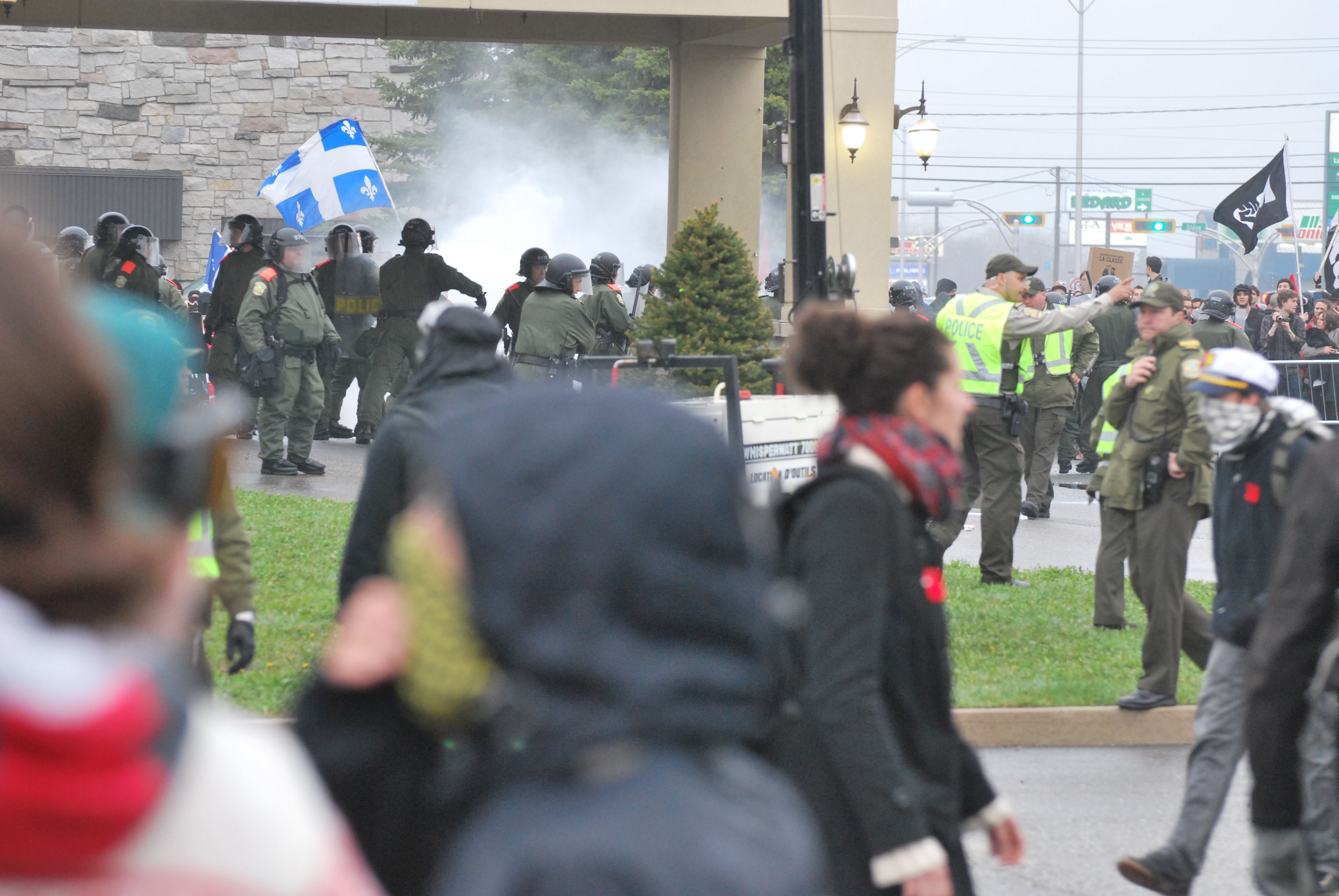Browse "Protests"
-
Article
Black Lives Matter-Canada
Black Lives Matter (BLM) is a decentralized movement to end anti-Black racism. It was founded as an online community in the United States in 2013 in response to the acquittal of the man who killed Black teenager Trayvon Martin. Its stated mission is to end white supremacy and state-sanctioned violence and to liberate Black people and communities. The Black Lives Matter hashtag (#BlackLivesMatter) has been used to bring attention to discrimination and violence faced by Black people. BLM has chapters in the United States and around the world. There are five chapters in Canada: Toronto (BLM-TO), Vancouver (BLM-VAN), Waterloo Region, Edmonton, and New Brunswick.
"https://d2ttikhf7xbzbs.cloudfront.net/BLM/BlackLivesMatterProtest.jpg" // resources/views/front/categories/view.blade.php
https://d2ttikhf7xbzbs.cloudfront.net/BLM/BlackLivesMatterProtest.jpg
-
Article
Drumheller Strike
The Drumheller Strike of 1925 1925, ushered in a period of rival or "dual" unionism in Alberta's coalfields. The Drumheller miners, rejecting wage cuts negotiated by the United Mine Workers, struck in June 1925.
"https://development.thecanadianencyclopedia.ca/images/tce_placeholder.jpg?v=e9dca980c9bdb3aa11e832e7ea94f5d9" // resources/views/front/categories/view.blade.php
https://development.thecanadianencyclopedia.ca/images/tce_placeholder.jpg?v=e9dca980c9bdb3aa11e832e7ea94f5d9
-
Article
Fraser River Fishermen's Strikes
On 8 July 1900, fishermen for 47 salmon canneries that lined the lower Fraser River from New Westminster to the river mouth struck for a season-long, 25-cent, minimum price instead of prices which dropped as catches increased.
"https://development.thecanadianencyclopedia.ca/images/tce_placeholder.jpg?v=e9dca980c9bdb3aa11e832e7ea94f5d9" // resources/views/front/categories/view.blade.php
https://development.thecanadianencyclopedia.ca/images/tce_placeholder.jpg?v=e9dca980c9bdb3aa11e832e7ea94f5d9
-
Article
Fraser River Railway Strikes
The Wobbly poet and martyr Joe Hill visited the camp at Yale and wrote several songs, including "Where the Fraser River Flows," still a labour standard.
"https://d2ttikhf7xbzbs.cloudfront.net/media/media/85c764cc-4b3c-42f9-9953-5f1f2c40cbde.jpg" // resources/views/front/categories/view.blade.php
https://d2ttikhf7xbzbs.cloudfront.net/media/media/85c764cc-4b3c-42f9-9953-5f1f2c40cbde.jpg
-
Article
Front de libération du Québec (FLQ)
The Front de libération du Québec (FLQ) was a militant Quebec independence movement that used terrorism to try and achieve an independent and socialist Quebec. FLQ members — or felquistes — were responsible for more than 200 bombings and dozens of robberies between 1963 and 1970 that left six people dead. Their actions culminated in the kidnapping of British trade commissioner James Cross and the kidnapping and subsequent murder of Quebec cabinet minister Pierre Laporte, in what became known as the October Crisis.
"https://d2ttikhf7xbzbs.cloudfront.net/media/new_article_images/FLQ/EC_2012-07-30.b1_IMG_0003-V.2 (1).jpg" // resources/views/front/categories/view.blade.php
https://d2ttikhf7xbzbs.cloudfront.net/media/new_article_images/FLQ/EC_2012-07-30.b1_IMG_0003-V.2 (1).jpg.jpg)
-
Article
Gustafsen Lake Standoff
The Gustafsen Lake Standoff was a month-long conflict (18 August–17 September 1995) between a small group of First Nations Sun Dancers and the Royal Canadian Mounted Police (RCMP). The standoff took place in central British Columbia, in Secwepemc (Shuswap) territory near 100 Mile House. Sparked by a dispute between a local rancher and a camp of Sun Dancers over access to private land for ceremonial purposes, the armed confrontation raised larger questions of Indigenous land rights in British Columbia. On 11 September 1995, in what was later called the largest paramilitary operation in the history of the province, RCMP surrounded the remote camp and a firefight erupted during which, remarkably, no one was seriously injured. The standoff at Gustafsen Lake is perhaps the least known in a series of localized armed conflicts involving Indigenous peoples in the 1990s that included the Oka and Ipperwash crises in Quebec and Ontario, respectively.
"https://d2ttikhf7xbzbs.cloudfront.net/media/media/a91c62c3-627d-4cbc-bc37-75fe1f9ee255.jpg" // resources/views/front/categories/view.blade.php
https://d2ttikhf7xbzbs.cloudfront.net/media/media/a91c62c3-627d-4cbc-bc37-75fe1f9ee255.jpg
-
Article
Ipperwash Crisis
The Ipperwash Crisis took place in 1995 on land in and around Ontario’s Ipperwash Provincial Park, which was claimed by the Kettle and Stony Point First Nation. The underlying cause of the crisis was the appropriation of the Stoney Point Reserve in 1942 by the federal government for use as a military camp. After repeated requests for the land to be returned, members of the Stony Point First Nation occupied the camp in 1993 and in 1995. On 4 September 1995 protesters also occupied Ipperwash Provincial Park nearby. Tension between the protesters and the OPP increased, resulting in a confrontation on 6 September 1995 during which Dudley George, an Ojibwa protestor, was killed.
"https://d2ttikhf7xbzbs.cloudfront.net/media/media/bcf04d96-a331-4532-bed5-98ee62f4034e.jpg" // resources/views/front/categories/view.blade.php
https://d2ttikhf7xbzbs.cloudfront.net/media/media/bcf04d96-a331-4532-bed5-98ee62f4034e.jpg
-
Article
La Presse Strike
Two days later, the 3 main UNION CENTRALS defied a municipal ban to organize a huge march in solidarity with the newspaper workers. More than 12 000 people clashed with 100 Montréal policemen. The outcome was some 50 arrests, several dozen injuries and one death from natural causes.
"https://d2ttikhf7xbzbs.cloudfront.net/media/media/c762eef7-88b7-40c9-afbe-91aa60ae56dd.jpg" // resources/views/front/categories/view.blade.php
https://d2ttikhf7xbzbs.cloudfront.net/media/media/c762eef7-88b7-40c9-afbe-91aa60ae56dd.jpg
-
Article
#MeToo Movement in Canada
The #MeToo movement protesting sexual violence against women began in the United States in October 2017 in the wake of accusations against Hollywood film producer Harvey Weinstein. Since then, it has rapidly expanded internationally through Facebook, Twitter and other social media platforms. In Canada, #MeToo and its French equivalent, #MoiAussi, have amplified the voices of victims and changed the conversation pertaining to rape, sexual abuse, sexual assault and other forms of sexual violence, harassment and misconduct.
"https://d2ttikhf7xbzbs.cloudfront.net/media/new_article_images/metoo/dreamstime_xl_114828812.jpg" // resources/views/front/categories/view.blade.php
https://d2ttikhf7xbzbs.cloudfront.net/media/new_article_images/metoo/dreamstime_xl_114828812.jpg
-
Article
Montréal Riots
In February and March 1849 when the LaFontaine-Baldwin ministry passed the Rebellion Losses Bill, the opposition violently denounced the Act.
"https://development.thecanadianencyclopedia.ca/images/tce_placeholder.jpg?v=e9dca980c9bdb3aa11e832e7ea94f5d9" // resources/views/front/categories/view.blade.php
https://development.thecanadianencyclopedia.ca/images/tce_placeholder.jpg?v=e9dca980c9bdb3aa11e832e7ea94f5d9
-
Article
Political Protest
Political protest is the kind of political activity, eg, demonstrations, strikes and even VIOLENCE, usually but not always undertaken by those who lack access to the resources of organized PRESSURE GROUPS, or by those whose values conflict sharply with those of the dominant ELITE.
"https://d2ttikhf7xbzbs.cloudfront.net/media/media/1a569bb1-9267-494b-9b5f-614e5ded3171.jpg" // resources/views/front/categories/view.blade.php
https://d2ttikhf7xbzbs.cloudfront.net/media/media/1a569bb1-9267-494b-9b5f-614e5ded3171.jpg
-
Article
2012 Québec Student Strike
In 2012, Québec and Canada experienced the longest student strike in their histories. The strike lasted several months (from 13 February to 7 September 2012) and pitted students in Québec against the provincial government on the issue of tuition fee increases.
"https://d2ttikhf7xbzbs.cloudfront.net/media/media/4e6b7748-1d05-452c-87c2-f62bd4603344.JPG" // resources/views/front/categories/view.blade.php
https://d2ttikhf7xbzbs.cloudfront.net/media/media/4e6b7748-1d05-452c-87c2-f62bd4603344.JPG -
Article
Riot
Under s67 of the Criminal Code, where a riot involving 12 or more people is in progress, a justice, mayor, sheriff or other designated official is authorized to order the rioters to disperse in the name of the Queen. In popular terms, this is "reading the Riot Act.
"https://d2ttikhf7xbzbs.cloudfront.net/media/media/872f4d61-ca69-4d52-b28f-7b544f9693ed.jpg" // resources/views/front/categories/view.blade.php
https://d2ttikhf7xbzbs.cloudfront.net/media/media/872f4d61-ca69-4d52-b28f-7b544f9693ed.jpg
-
Article
Sir George Williams Affair
The Sir George Williams affair (also known as the Sir George Williams riot) took place in winter 1969, when more than 200 students decided to peacefully occupy the ninth floor of the Henry F. Hall Building at Sir George Williams University in Montreal. These students were protesting the university administration’s decision regarding a complaint of racism that had been filed several months earlier by six Black students from the Caribbean. On 11 February 1969, to dislodge the students occupying the building, the police intervened forcefully, and the situation deteriorated, resulting in over $2 million worth of damage and the arrest of 97 people. The Sir George Williams affair is regarded as the largest student riot in Canadian history. For many observers and historians, it represents a key moment in the rebirth of black militancy in Montreal.
"https://d2ttikhf7xbzbs.cloudfront.net/media/media/e31f1667-bf31-4052-95c4-22a3da881f96.jpg" // resources/views/front/categories/view.blade.php
https://d2ttikhf7xbzbs.cloudfront.net/media/media/e31f1667-bf31-4052-95c4-22a3da881f96.jpg
-
Article
The Journey of Nishiyuu (The Journey of the People)
Between 16 January and 25 March 2013, six Cree youths and their guide walked 1,600 km from Whapmagoostui First Nation, the northernmost Cree village in Quebec on Hudson Bay, to Parliament Hill in Ottawa in support of the Idle No More movement. They called the trek “The Journey of Nishiyuu,” which is Cree for “people.” Known as the Nishiyuu Walkers, the group attracted national media attention and inspired Indigenous youth to be the force of change in their lives and communities. (See also Indigenous Women Activists in Canada and Indigenous Political Organization and Activism in Canada.)
"https://d2ttikhf7xbzbs.cloudfront.net/media/media/00339332-5ac9-4b3b-8578-b7200b7db6fc.jpg" // resources/views/front/categories/view.blade.php
https://d2ttikhf7xbzbs.cloudfront.net/media/media/00339332-5ac9-4b3b-8578-b7200b7db6fc.jpg

